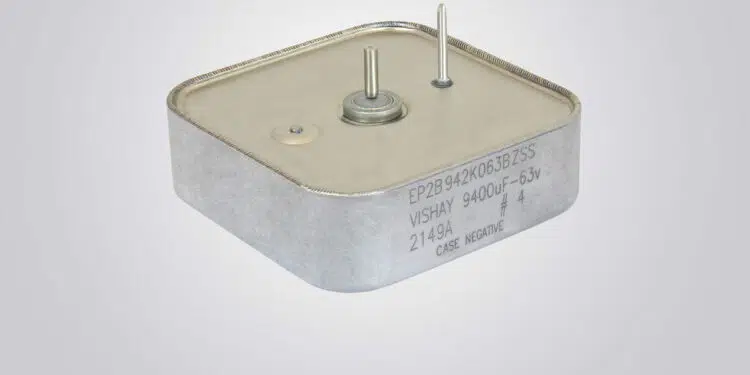To meet the needs of military and avionics applications, Vishay Intertechnology, Inc. introduced a new EP2 high energy wet tantalum capacitor that delivers the industry’s highest capacitance per voltage rating and case size for this device type.
Vishay Intertechnology EP2 wet tantalum capacitor offers industry-high capacitance, mechanical robustness for military and avionics systems.
Available with radial through-hole terminations with a stud mount option in the B and C case codes, the EP2 can be used as an exact drop-in replacement for competing parts or as a higher capacitance alternative in a mechanically equivalent package to reduce component counts, save space, and lower design costs.
Built on Vishay’s proven SuperTan® technology, the device released today features ultra high capacitance from 2,700 µF to 48,000 µF in the B case code and 3,600 µF to 72,000 µF in the C case code. Voltage ratings for the capacitor range from 25 VDC to 125 VDC. The EP2’s industry-leading values include a capacitance of 9,000 µF at 80 V and 58,000 µF at 35 V in the C case size. These values are 50 % and 21 % greater, respectively, than the closest competing device. The capacitor features a standard capacitance tolerance of ± 20 %, with ± 10 % tolerance available.
Optimized for pulse power and energy hold-up applications in laser guidance, radar, and avionics systems, the EP2 is housed in an all-tantalum, hermetically sealed case for increased reliability. Offering robust mechanical performance, the capacitor features high vibration (high frequency: 20 g; random: 19.64 g) and mechanical shock (50 g) capabilities.
The device operates over a temperature range of -55 °C to +85 °C, to +125 °C with voltage derating, and provides maximum ESR down to 0.017 Ω at 1 kHz and +25 °C. The capacitor is available with tin / lead (Sn / Pb) and RoHS-compliant 100 % tin terminations.
Samples and production quantities of the EP2 are available now, with lead times of 16 weeks for larger orders.
































